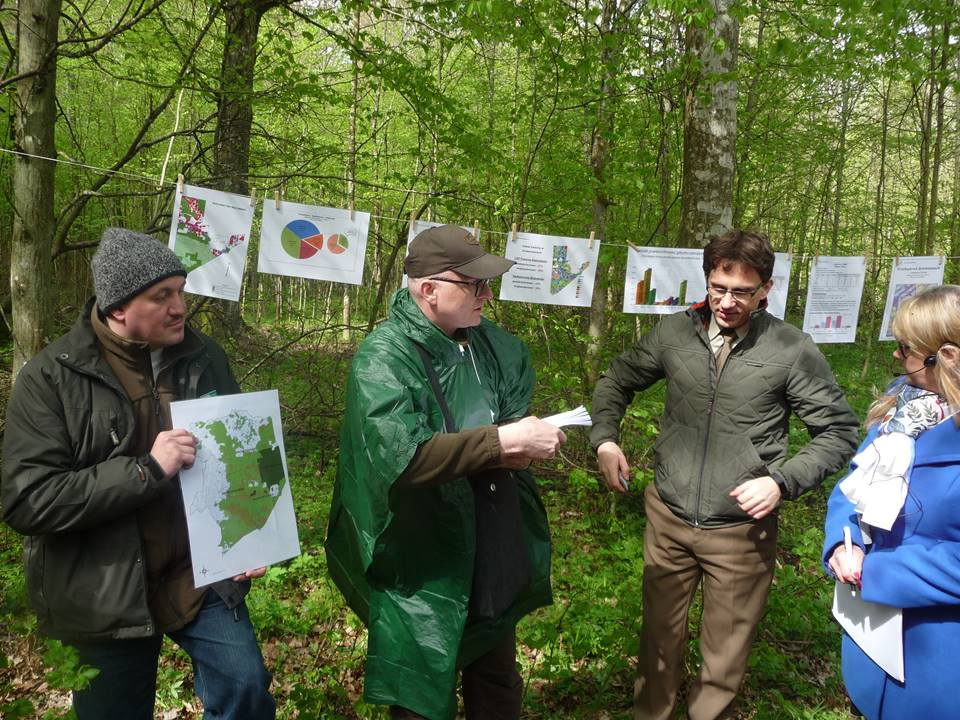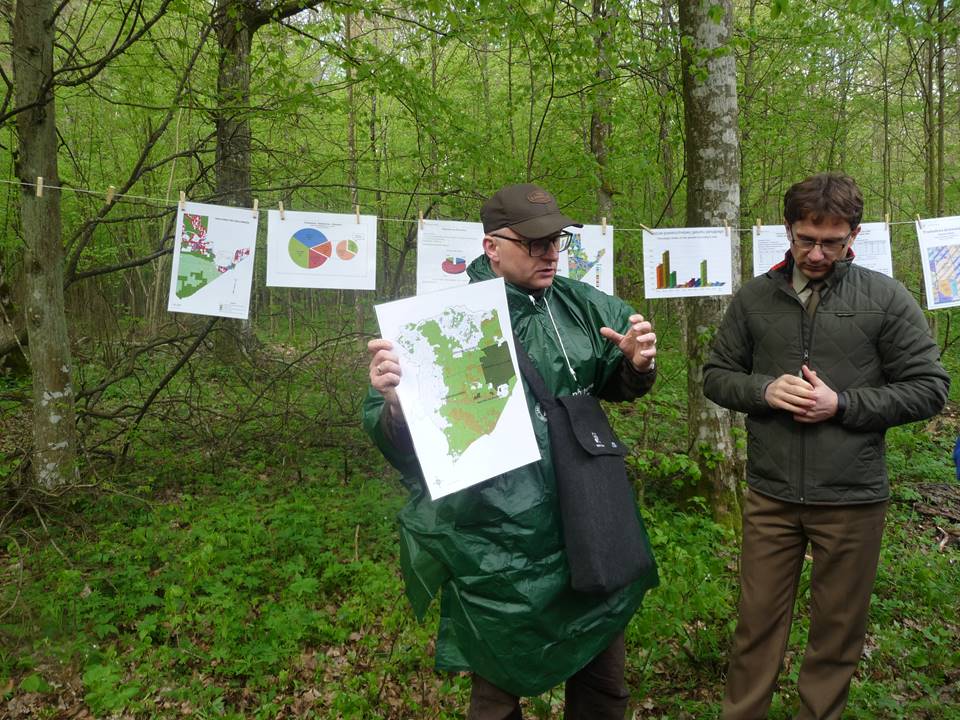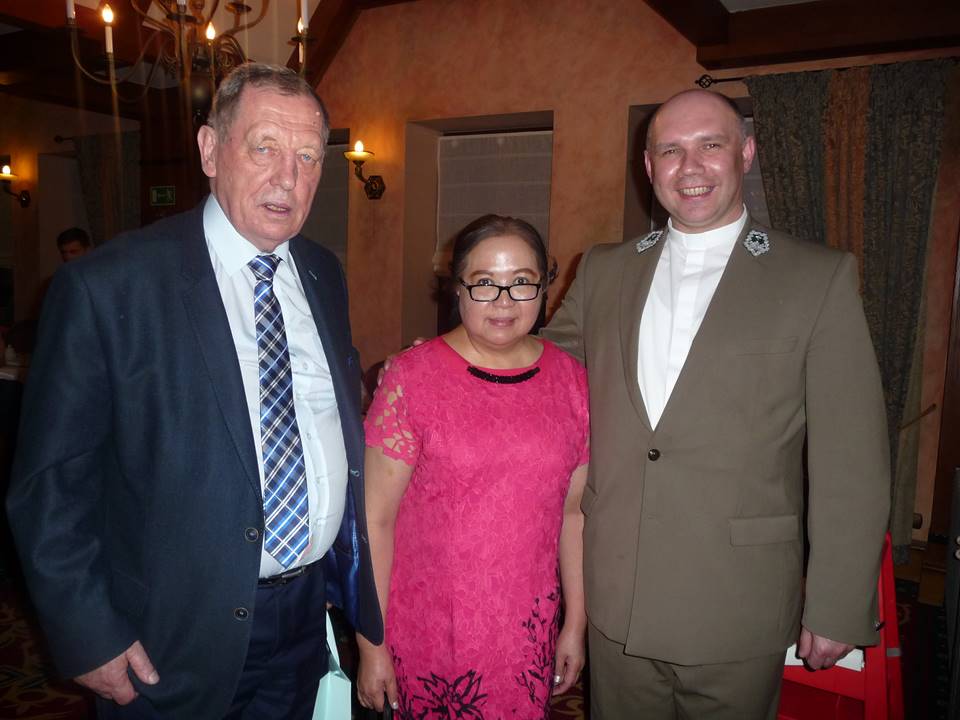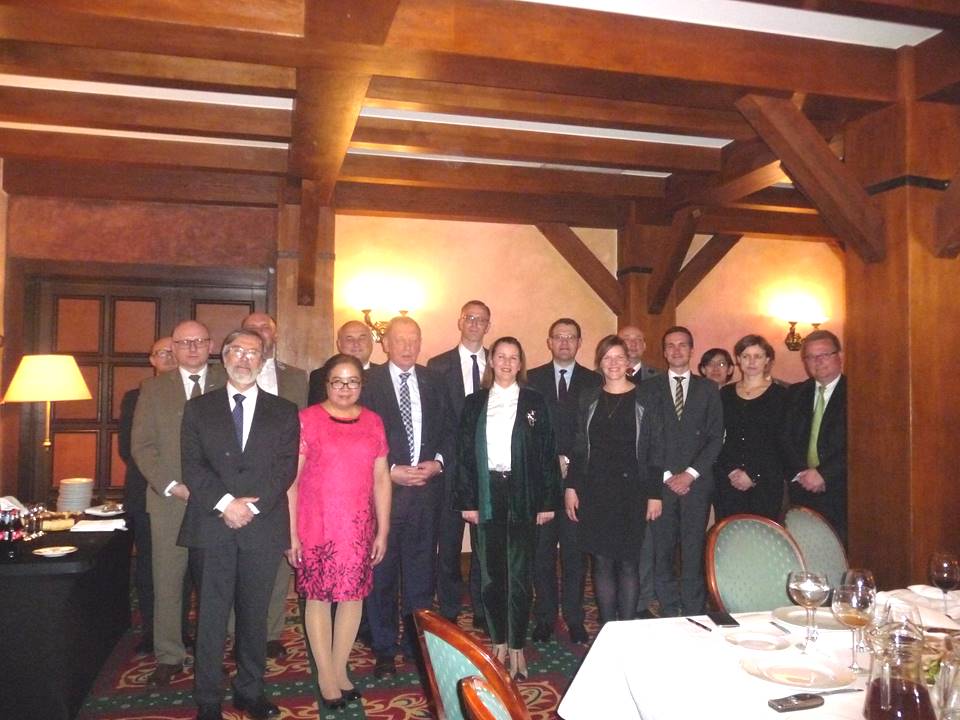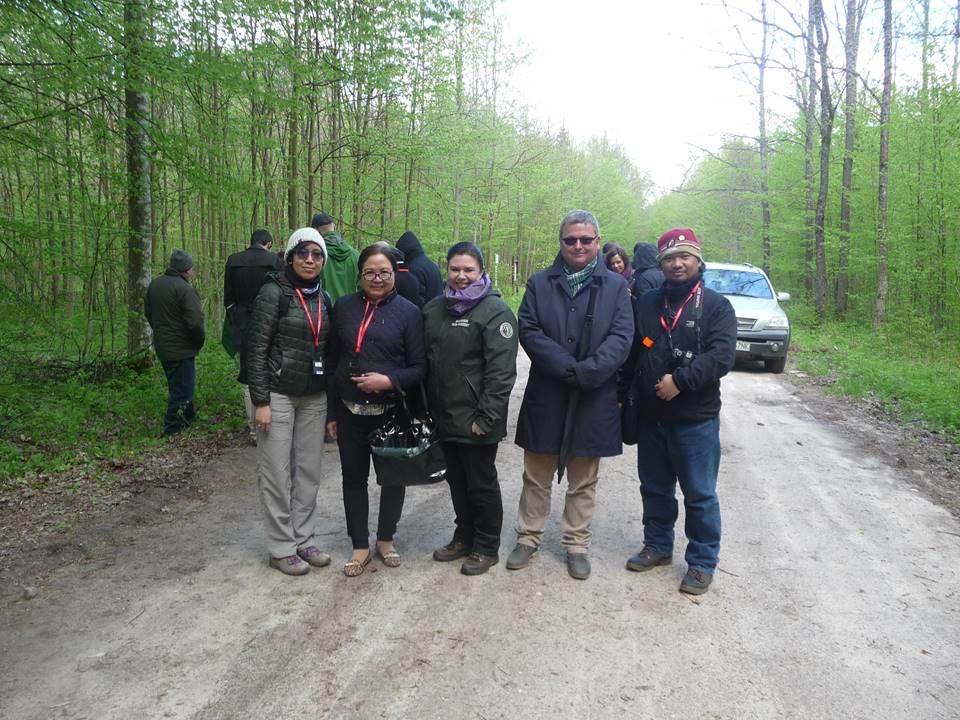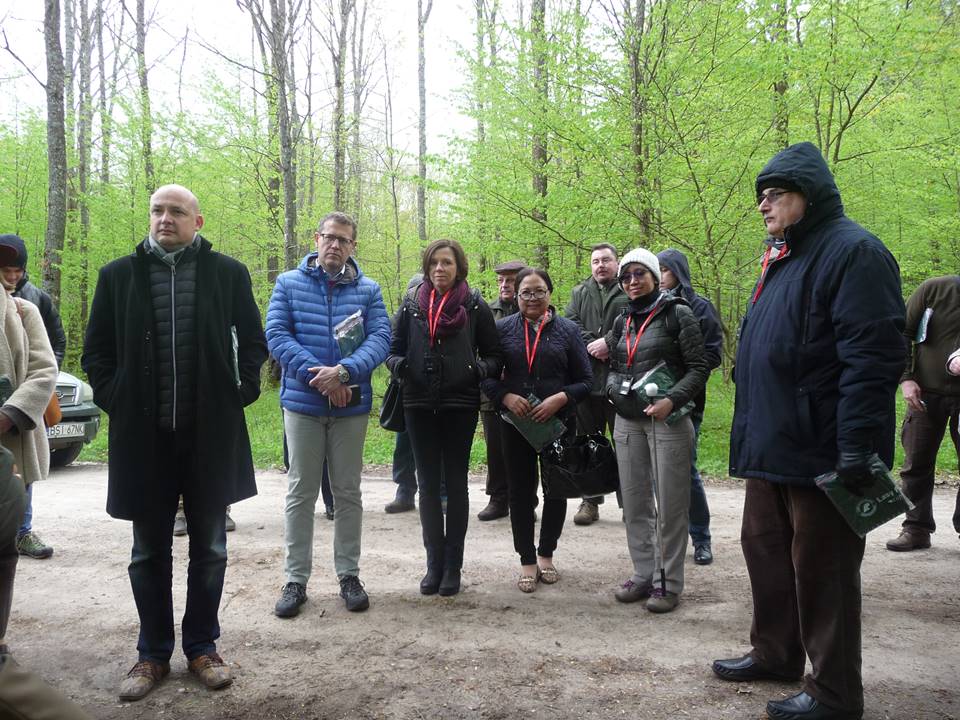Undersecretary of State of the Ministry of Environment and Plenipotentiary for the Bialowieza Forest Mr. Andrzej Konieczny (2nd from left) and other Bialowieza Forest management officials gave an on-site briefing about the forest and how it is being protected
Minister of Environment Mr. Jan Szyszko, Amb. Paez and the local chaplain
during the welcome dinner hosted by Min. Szyszko
First row, L to R: Ambassador of Spain H.E. Mr. Agustin Nunez Martinez; Amb. Paez; Minister Szyszko; and Ambassador of Croatia H.E. Mrs. Andrea Bekic
Mrs. Olimpia Pabian (center) is the Supervisor of the Bialowieza National Park. She is the first and only female national park supervisor in Poland
Ambassador of Australia H.E. Mr. Paul Wojciechowski (2nd from left)
WARSAW_ Envoys accredited to Poland were invited by Poland’s Ministry of Environment to visit the “Transboundary Bialowieza Forest” which is listed among the UNESCO’s World Heritage Sites. Straddling both Poland and Belarus, the Forest is one of the “last existing examples of ancient forest ecosystems of the European lowlands. ”
Minister of the Environment Mr. Jan Szyszko hosted a welcome dinner for the participants at the Zubrowka Hotel. The next morning, they went on a field trip to the Bialowieza Forest where Undersecretary of State of the Ministry of the Environment and Plenipotentiary for the Bialowieza Forest Mr. Andrzej Konieczny, together with Bialowieza Forest management officials, gave an on-site briefing.
There are two points of view on how to protect this ecosystem. The UNESCO puts value on the “protection of natural/ecological processes” which actually means leaving it totally undisturbed or untouched (“passive protection”) by prohibiting even the “active protection” of species and inhabitants in the Forest which could eventually lead to “biodiversity loss.”
According to the Ministry of Environment, the Bialowieza Forest has an “insufficient area” for the “protection and observation of natural processes (due to the) gradual dying out and disappearance of habitats that have been recorded” in the past decades. It is presently threatened by the outbreak of the bark beetle which has already infested many trees resulting to the “death” not only of individual trees but of whole patches of the Forest. The Bialowieza Forest is reportedly “perishing, and with it, the habitats of many species, including the ones protected under the Bird and Habitat Directive in the Natura 2000 network.”
Poland’s Ministry of Environment is of the view that “active protection” measures are essential since unconditional “passive protection, however beneficial to some components of the forest ecosystem is not enough to protect that whole natural wealth of the site.”
At present, 1,400 research centers have been set up to monitor the “living organisms of the Bialowieza Forest” and more than 1,500 species of animals are being studied in detail. Each of the 1,400 centers covers an area of 400 square meters.
The amount of wood from dead trees (the “deadwood”), which is an “indicator of biological diversity” is large, totalling more than 3.8 million cubic meters. Today, 1/3 of the Bialowieza Forest is “left untouched without any activity” while other areas “are managed in accordance with the principles of sustainable development.” The two areas will be compared using “objective scientific methods and the best specialists in natural environment science.”
The Ministry of Environment has embarked on a scientific initiative and is developing an internet application that will allow anyone to observe changes taking place in the Bialowieza Forest.
Late in the afternoon, the participants were taken to the Bialowieza National Park where at least 800 bisons live. The Park has an area of around 10,517 hectares which constitute 1/6 of the Polish part of the Bialowieza Forest. The Park supervisor is Ms. Olimpia Pabian - the first and only female national park supervisor in Poland.
The Bialowieza Forest is being expertly managed by highly-trained specialists using state-of-the-art technologies and processes in forest preservation and management from which the Philippines can learn a lot. (END)

